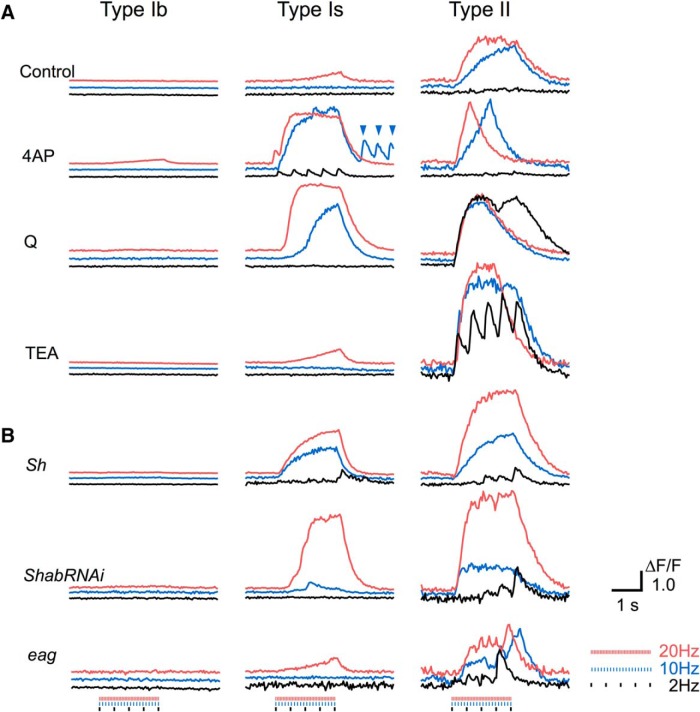Figure 5.
Distinct effects of various genetic and pharmacological perturbations of K+ channels on type Ib, Is, and II synapses at different stimulus frequencies. Note that these perturbations preferentially lowered the frequency threshold for GCaMP signals in type Ib, Is, and II synapses. A, +; +; nSyb-GCaMP6m larvae used as WT control (0.1 mM Ca2+, top-row traces), examined by applying 4-AP (200 µM), quinidine (abbreviated as Q, 20 µM), and TEA (10 mM). Black trace, 2-Hz stimulation; blue, 10 Hz; red, 20 Hz. Note the drastic frequency response change in type II synapses (2 Hz, Q and TEA), in type Is (10 Hz, 4-AP), and in type Ib (20 Hz, 4-AP). B, Genetic perturbation of GCaMP signals examined with ShM/Y;; nSyb-GCaMP6m/+, eag1/Y;+; nSyb-GCaMP6m/+, and UAS-ShabRNAi/+; nSyb-GCaMP6m/+. Three to five larvae for each condition were tested and consistent results were obtained.

